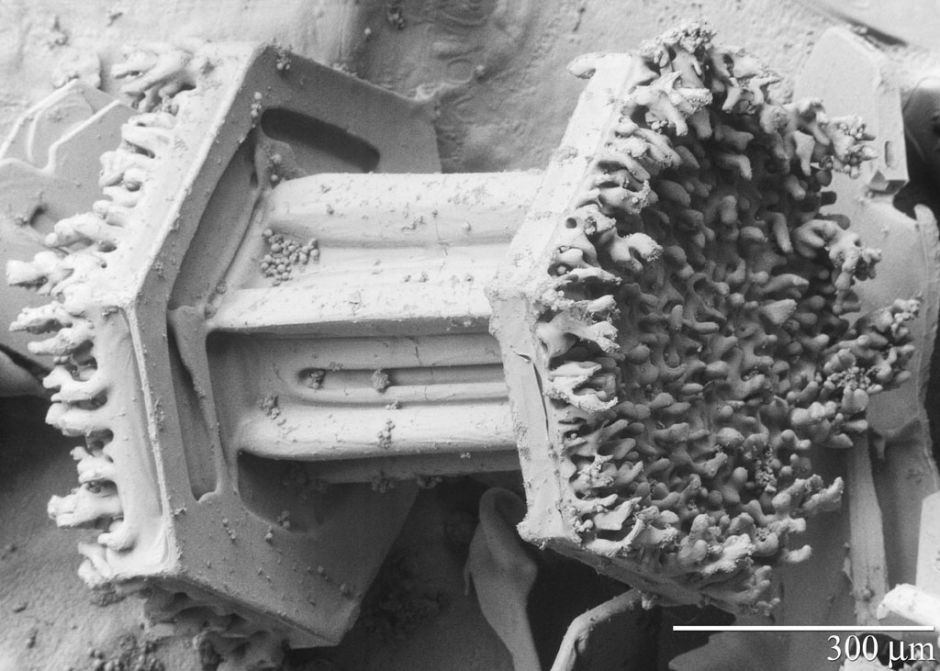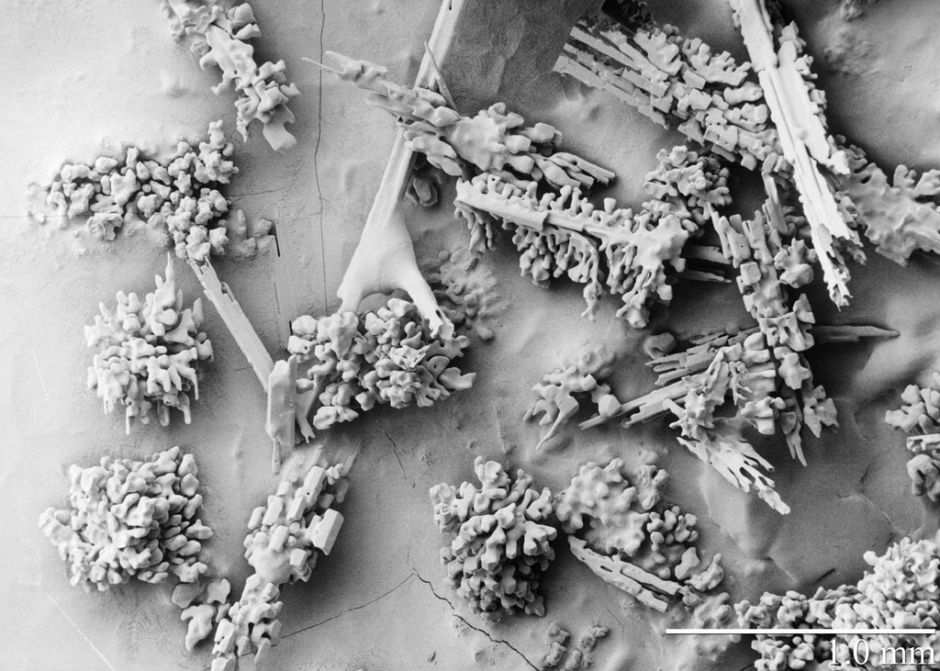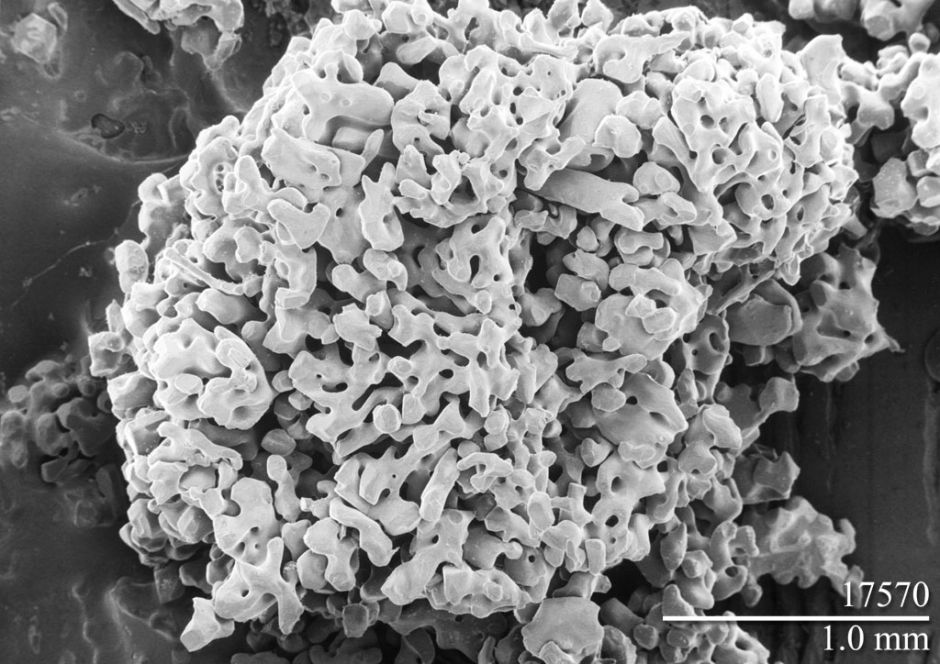Microscopic Images of Snow Crystals.
The following images were obtained using a Low Temperature Scanning Electron Microscope (LT-SEM) that is located in the Beltsville Agricultural Research Center in the Electron Microscopy Unit, Bld. 465, Beltsville Maryland 20705. Information gained from studying the structure of snow is vital to several areas of science as well as to activities that affect our daily lives and is only one of several agricultural research projects that are currently being pursued in this research unit.
Pseudo Color Snow Crystals









Selected Snow Crystals
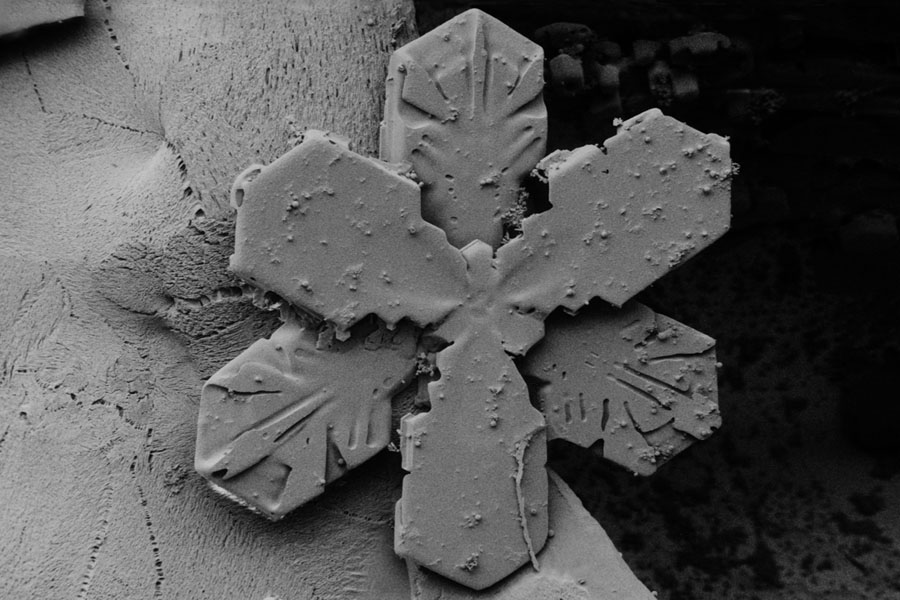

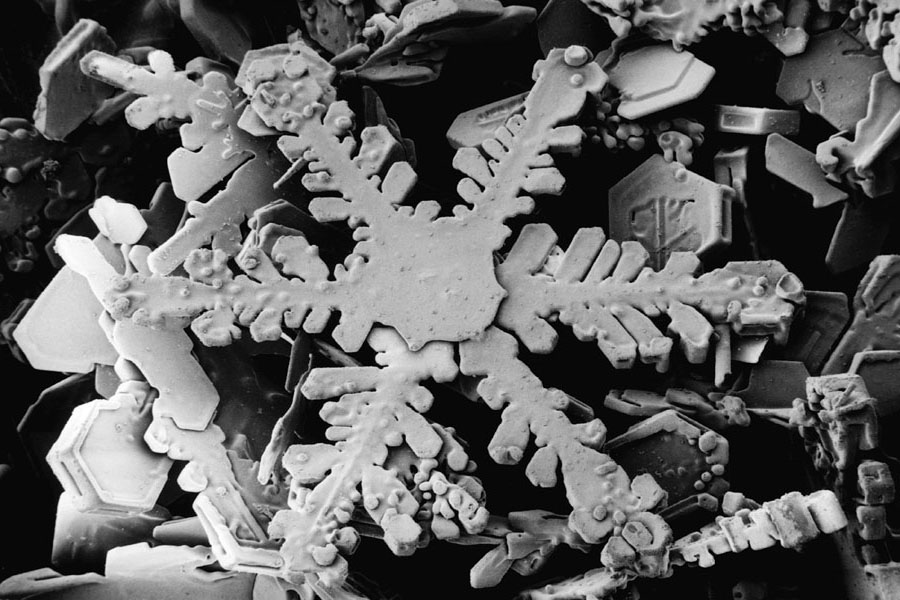

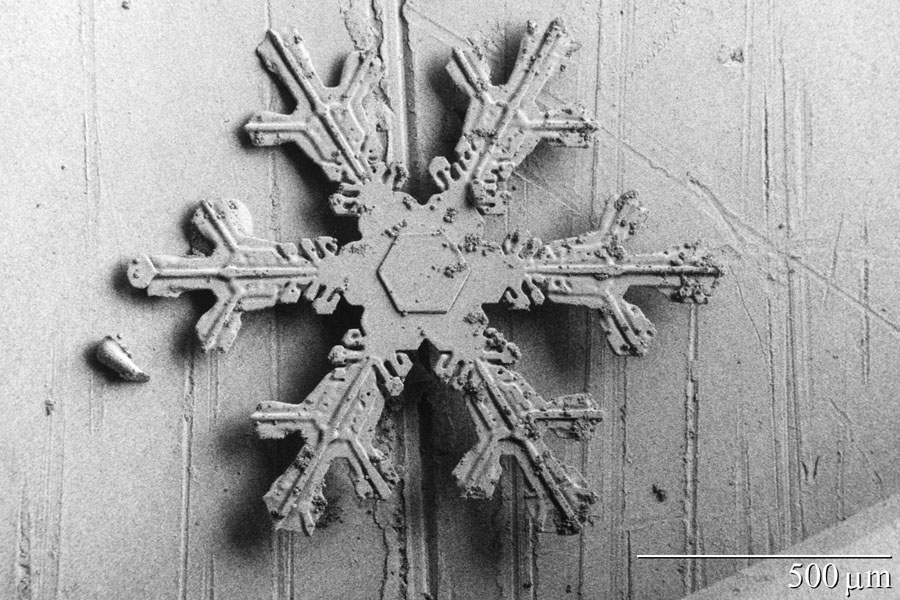
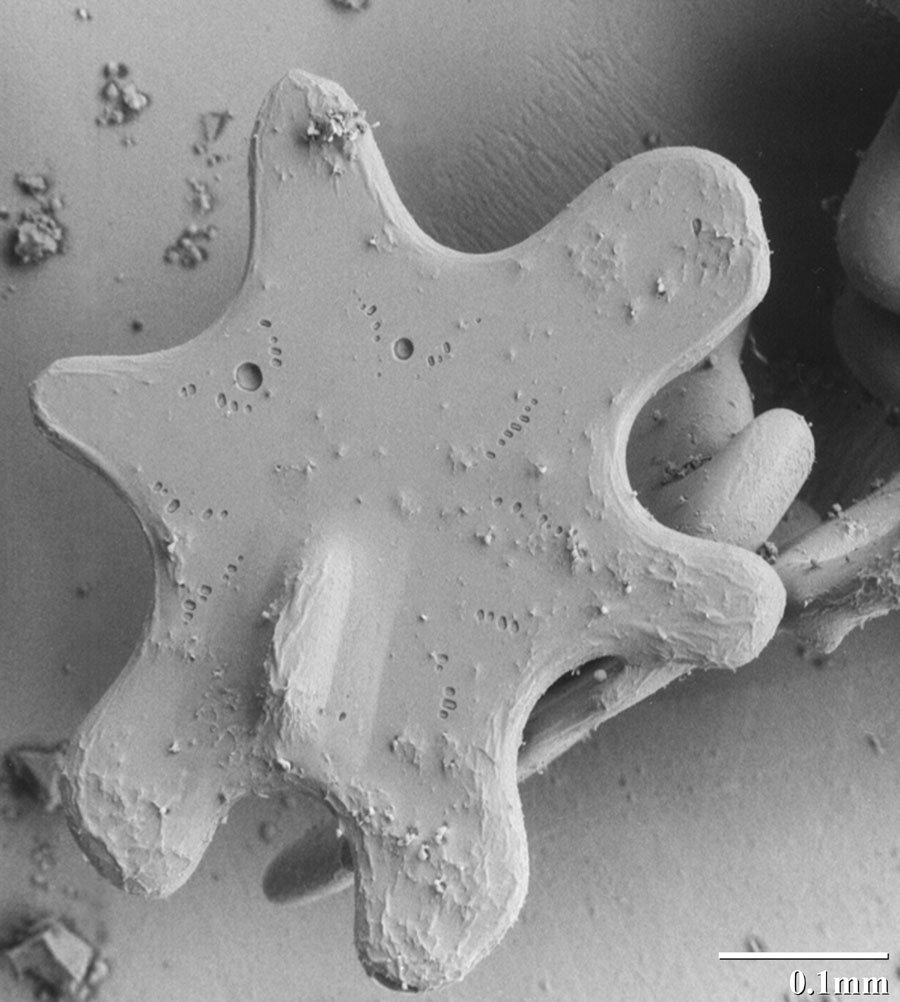
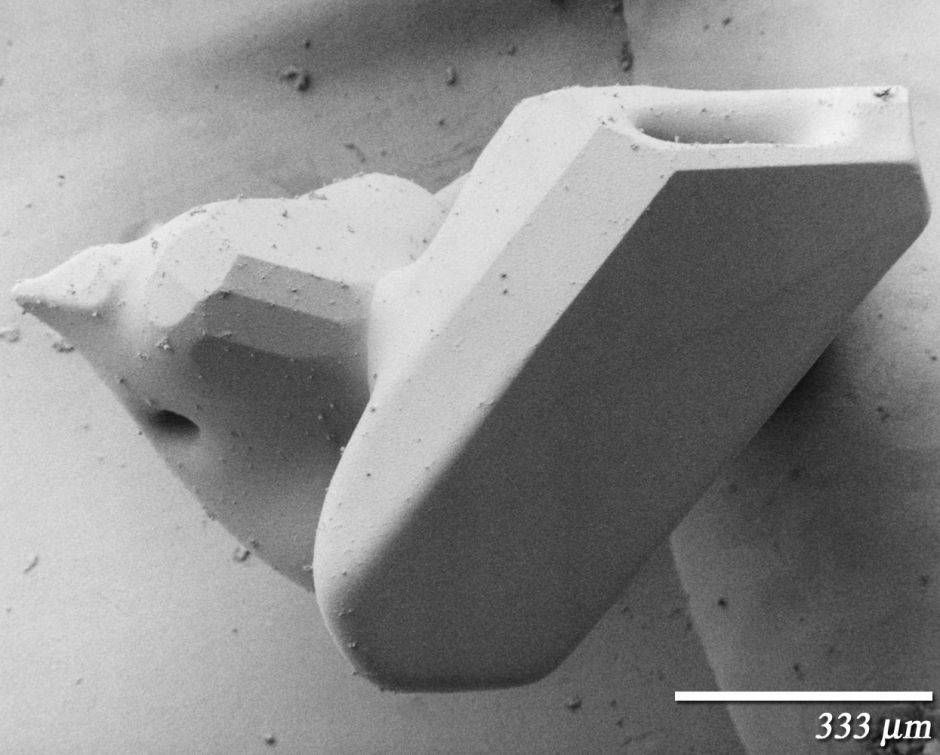
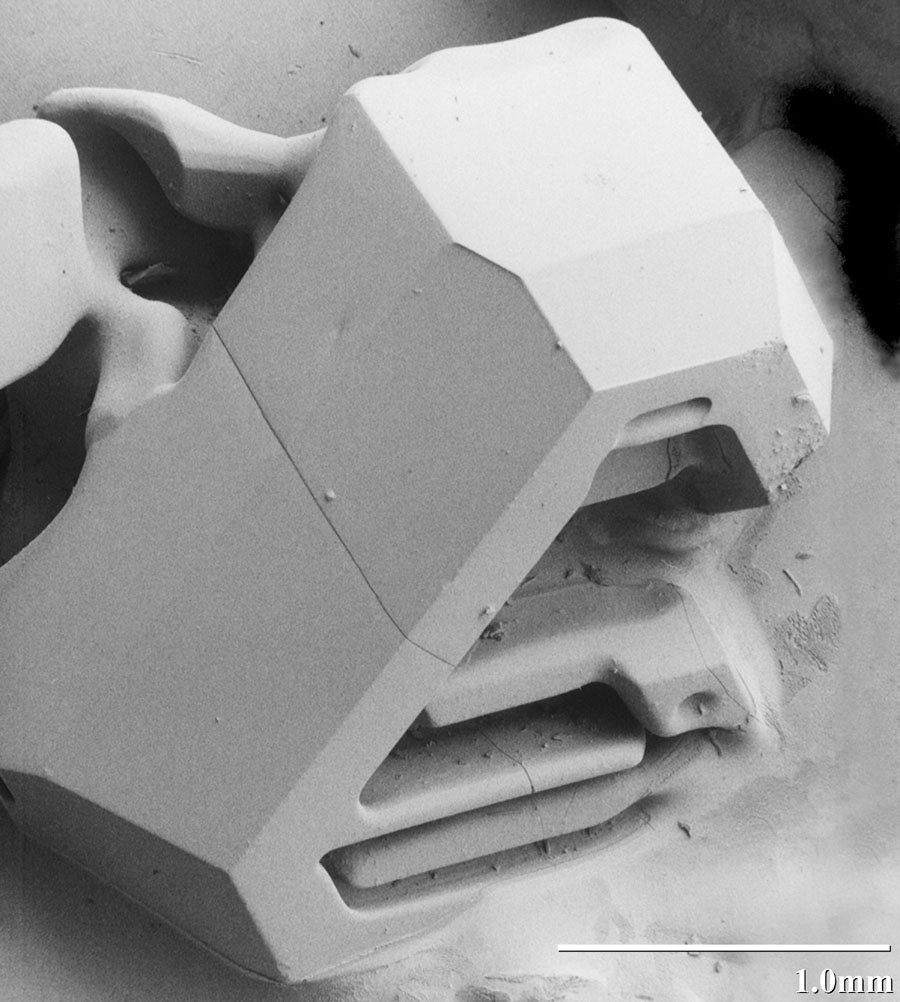

Rime and Graupel
Under some atmospheric conditions, forming and descending snow crystals may encounter and pass through atmospheric supercooled cloud droplets. These droplets, which have a diameter of about 10 µm, can exist in the unfrozen state down to temperatures near -40° C. Contact between the snow crystal and the supercooled droplets results in freezing of the liquid droplets onto the surface of the crystals. This process of crystal growth is know as accretion. Crystals that exhibit frozen droplets on their surfaces are referred to as rimed. When this process continues so that the shape of the original snow crystal is no longer identifiable, the resulting crystal is referred to as graupel. The frozen droplets on the surface of rimed crystals are hard to resolve and the topography of a graupel particle is not easy to record with a light microscope because of the limited resolution and depth of field in the instrument. However, observations of snow crystals with a low temperature LT-SEM clearly show cloud droplets measuring up to 50 µm on the surface of the crystals.


